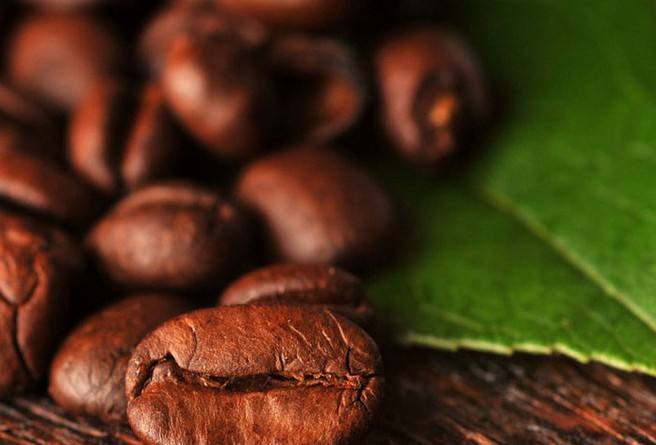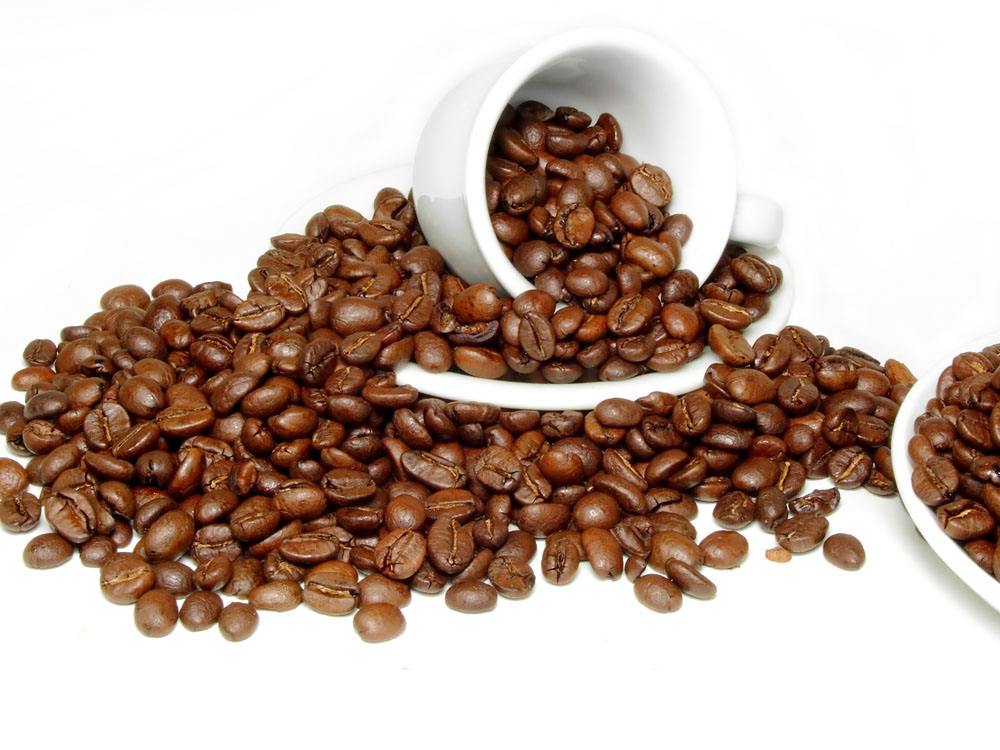Effect of moderate Baking on Coffee Flavor
Follow the caf é (Wechat official account vdailycom) and found that Beautiful Cafe opened a small shop of its own.
Medium baked enhanced caramel aroma of nuts
The heat of shallow roasting is mild, because the sour aroma of flowers and fruits is retained the most, and it is easy to smell the sour aroma of coffee. If the baking continues, that is, from the end of the first explosion to the middle baking before the second explosion, or even from just to the second explosion, most of the sour flavor of "fermentation catalysis" has been cracked and replaced by the taste spectrum of "sugar browning reaction" (Sugar Browning) and "Mena reaction" instead. Moderately baked sugar browning reaction mainly refers to caramelization and caramel aroma, while Mena reaction is more complex, which is a browning and aroma-making reaction of carbohydrates and amino acids, producing attractive aromas of nuts, rice and wheat, dark chocolate and cream chocolate.
Raw beans of unroasted coffee, not suitable for drinking
It is worth noting that raw beans of unroasted coffee contain vomiting ingredients such as propionic acid, butyric acid and valeric acid. If you boil water and drink it without baking, it is easy to turn your stomach and even vomit, but these ingredients are neutralized after baking. Instead, it produces more charming aroma.
Sucrose, which accounts for about 6% of soybean weight, is the main raw material of coking sugar. Sucrose is about 130 ℃-170 ℃. Sucrose is pyrolyzed into low molecular weight monosaccharides, glucose and fructose, and releases aroma and carbon dioxide. But with the furnace temperature rising to more than 180 ℃, these molecular weight monosaccharides continue to polymerize and concentrate to form darker medium molecular weight caramel components with caramel aroma. Caramelization is over 200 ℃, is coming to an end, and is finally completely carbonized.
Therefore, with the increase of temperature, caramelization produces different compounds with different odors, which is a very complex chemical reaction, which scientists do not fully understand. Basically, the caramelized aroma is the most attractive between medium baking and secondary explosion, which is why the baking degree of Agtorn#55 cup test is based on the caramelized degree of SCAA cup test. Once in the deep baking after the second explosion, the flavor is dominated by the more elusive drying effect.

Furan makes caramel sweet
It was not until 1926 that two top scientists, TadeusReichstein of Switzerland and Hermann Staudinger of Germany, took the lead in the study of the charming aroma of coffee. After 1950, their outstanding contributions in science won the Nobel Prize in Medicine and the Prize in Chemistry respectively. The two masters can be called the ancestors of coffee chemistry.
In the research report of 1926, Reichstein and Stottinger revealed for the first time that 29 compounds such as Furans, alkylpyrazine (Alkylpyrazines), diketone (α-diketones) and glycosylmercaptan (Furfuryl mercaptan) are the main components of coffee aroma, among which uran compounds are the most important. The sweet aroma of coffee is related to caramel, nuts, cream, almonds and even fruits.
In a difficult environment without the assistance of GC-MS (Gas Chromatography Mass Spectrometer) at that time, the two masters have found more than ten kinds of chafing compounds in coffee beans. Now scientists use instruments such as GC-MS and coffee beans to identify more than a hundred kinds of uran compounds, but not all of them are charming and some smell is very irritating.
It was thought that ran was the product of caramelization and the main source of moderate baked caramel flavor. However, in recent years, scientists have found that the aroma of coffee is not produced entirely by caramelization, and there are many aran compounds that are reduced by fat, and even monosaccharides (reducing sugars) interact with amino acids, that is, the famous Mena reaction is the protagonist of producing more abundant aran compounds, so caramelization alone cannot explain the aroma-making process of coffee roasting, and Mena reaction is the birth mother of coffee.
"Mena reaction" wins "caramel"
"Mena reaction" refers to a series of degradation and polymerization of monosaccharide carbohydrates (glucose, fructose, maltose, arabinose and lactose) with proteins (amino acids). The color becomes darker, which was discovered by French scientist Mena in 1912.
"caramelization" only ends in the "oxidation" or "browning" reaction of sugars heated, and the "Mena reaction" is broader. All kinds of monosaccharides react with amino acids at different temperatures to produce more complex aromas, which are much more complex than caramelization. Because caramel components are degraded again and polymerized with amino acids to form pyrazine heterocyclic aromatic compounds under the continuous increase of furnace temperature, which is the source of chocolate flavor. Then, most people mistakenly think that caramelization is the main source of coffee sweet fermentation, while ignoring the more important Mena reaction, which has something to do with the fact that caramelization is easier to understand, while the name of Mena reaction is more complex.
You should know that the aromas of nuts, almonds, cream and chocolate in the baking process come from the Mena reaction, not caramelization. In other words, if the coffee is caramelized without Mena reaction, it will only have a monotonous sweet and bitter taste, not a drink with all kinds of flavors.
The nuts in the SCAA flavor wheel and many sweet aromas are classified as caramelization reactions, which seems to simplify the formation of sweet aromas. The addition of Mena reaction here can bring the real results closer to the facts. The odor spectrum under caramelization and Mena reaction can be classified into three flavors: nut rhyme, caramel rhyme and chocolate rhyme, as shown in the following table.
1. Nut rhyme: drupe and wheat teeth
Drupes: almonds, peanuts, walnuts
Wheat teeth: corn, rice and wheat, cereals, toast
2. Caramel rhyme: candy and syrup
Candy: taffy, hazelnut, licorice
Syrup: honey, maple syrup
3. Chocolate rhyme: dark chocolate and cream chocolate
Dark Chocolate: bitter Chocolate, Dutch Chocolate
Cream chocolate: Swiss chocolate, almond chocolate
The above is the "aroma spectrum" produced by caramelization and Mena reaction from medium baking to medium-deep baking. The baking degree and molecular weight are in the following order: nutty odor → caramel odor → chocolate odor.
The nutty aroma is most obvious in shallow baking, caramel aroma appears later, and chocolate aroma is later, about medium to deep baking, even deep baking. Basically, the molecular weight and baking degree of nut, caramel and chocolate are higher than those of fermented fruit acid. If the baking goes on, medium-deep baking or deep baking, the compounds continue to dehydrate and polymerize, resulting in higher molecular weight, darker bean surface color and lower volatility, but higher bitterness, showing a completely different taste spectrum.
Important Notice :
前街咖啡 FrontStreet Coffee has moved to new addredd:
FrontStreet Coffee Address: 315,Donghua East Road,GuangZhou
Tel:020 38364473
- Prev

Knowledge of classification of coffee roasting methods
Following Cafe Review (Wechat official account vdailycom) found that Beautiful Cafe opened a small shop of its own baking methods category 1. The direct-fire baking machine puts the raw beans into a perforated drum and then contacts the beans directly with the fire of the gas burner. There are two simple and common ways: 1, a kind of direct-fire baking machine, commonly known as soil cannon 2, hand net baking
- Next

"Flick (Roasting Defect)" phenomenon in Coffee roasting
Following Cafe Review (official Wechat account vdailycom) found that Flick (Roasting Defect) phenomenon in coffee roasting Flick (Roasting Defect) (flicker) red curve and blue curve have the same bean temperature as the blue curve. * the Development Time Ratio of the red curve is 25.6% * the development rate of the blue curve (D
Related
- Beginners will see the "Coffee pull flower" guide!
- What is the difference between ice blog purified milk and ordinary milk coffee?
- Why is the Philippines the largest producer of crops in Liberia?
- For coffee extraction, should the fine powder be retained?
- How does extracted espresso fill pressed powder? How much strength does it take to press the powder?
- How to make jasmine cold extract coffee? Is the jasmine + latte good?
- Will this little toy really make the coffee taste better? How does Lily Drip affect coffee extraction?
- Will the action of slapping the filter cup also affect coffee extraction?
- What's the difference between powder-to-water ratio and powder-to-liquid ratio?
- What is the Ethiopian local species? What does it have to do with Heirloom native species?

